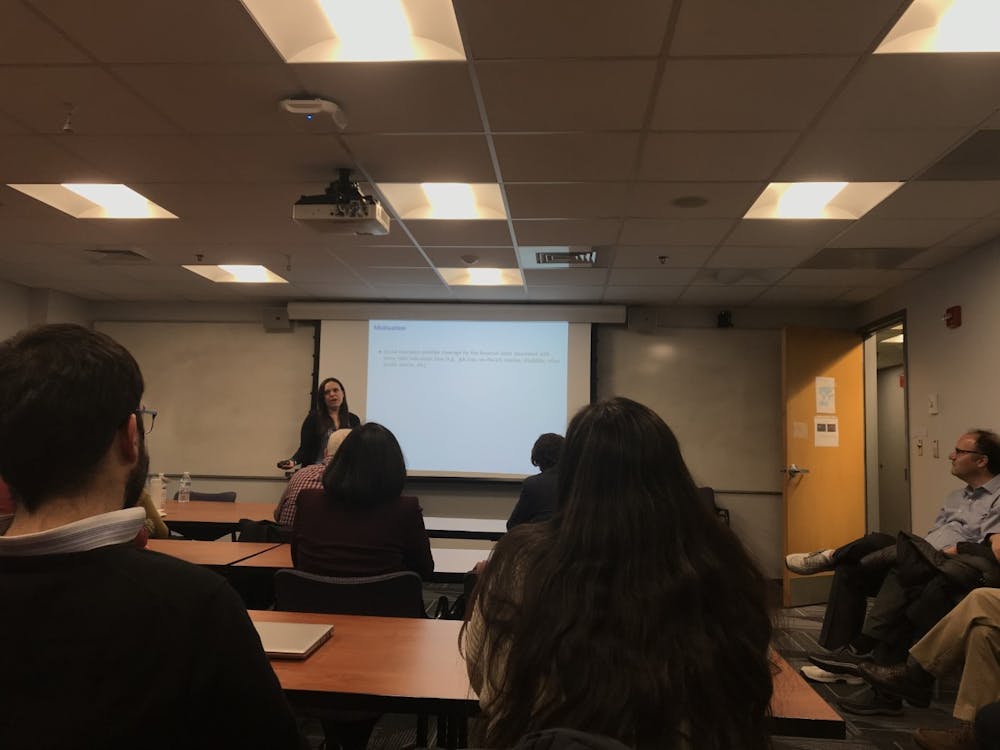When an employee suffers an on-the-job injury, their employer gives them full coverage for medical expenditures associated with that injury. To what extent, Marika Cabral wondered, does that coverage influence behaviors like medical spending, program costs and welfare?
Cabral, an assistant professor at University of Texas at Austin, explored that topic in her presentation “The Impact of Benefit Generosity on Workers’ Compensation Claims: Evidence and Implications” on Wednesday as a part of a seminar held by the Department of Economics at Hopkins.
Workers’ compensation includes weekly income schedules set by each state. An employee ceases to receive workers’ compensation when they decide to go back to work, when the doctor deems the patient healthy enough return to work or when the maximum duration of workers’ compensation is reached.
Workers’ compensation is unique in the realm of health insurance because the employee receives full coverage for medical treatment. Usually, the insured person is responsible for some portion of the medical bill, like through a copayment, to allay the possibility of moral hazard. Moral hazard occurs in insurance markets when a person seeks medical care above what is necessary simply because they do not incur the costs of treatment.
But Cabral described how wage replacement, not insurance coverage, seems to be the main point of contention in discussions of policy. Workers’ compensation includes linear wage replacement until an upper limit. The limit varies among and within states. Cabral described how in 2019, the cap in Mississippi was $494 per week but in Iowa it was $1819 per week.
“So it’s much better to get a back sprain in Iowa than in Mississippi,” she said jokingly.
According to Cabral, policy makers debate particulars of the generosity of benefits like the appropriate limit for workers’ compensation. They aim to set a value such that the funds offset damages, but do not encourage people to stay out of work for too long.
“Policy makers are perpetually debating whether these benefits should be more or less generous. In particular they are debating if they should be more or less generous for high-income earners,” she said.
In her research, Cabral looked at the effects of increasing workers’ compensation for high-income workers in Texas. She analyzed the data on three parameters: the likelihood of making a claim that requires workers’ compensation, the duration of time off from work and medical spending for injury.
Her motivation for looking at those parameters, especially medical spending, stemmed from the observation that literature involving benefits generosity does not address the impact of medical spending.
“The fact that medical spending is such a large and growing fraction of workers’ compensation made me interested to see what the effects of medical spending are and if it is part of the story of benefit generosity,” she said in an interview with The News-Letter.
Cabral and colleagues found that the amount of the compensation increases medical spending and durations of time off work. The two factors leads to an increase in insurance costs.
Their model suggests that increasing the linear wage replacement cap does not improve the welfare of the workers, and in fact the increased medical spending is responsible for the welfare loss.





